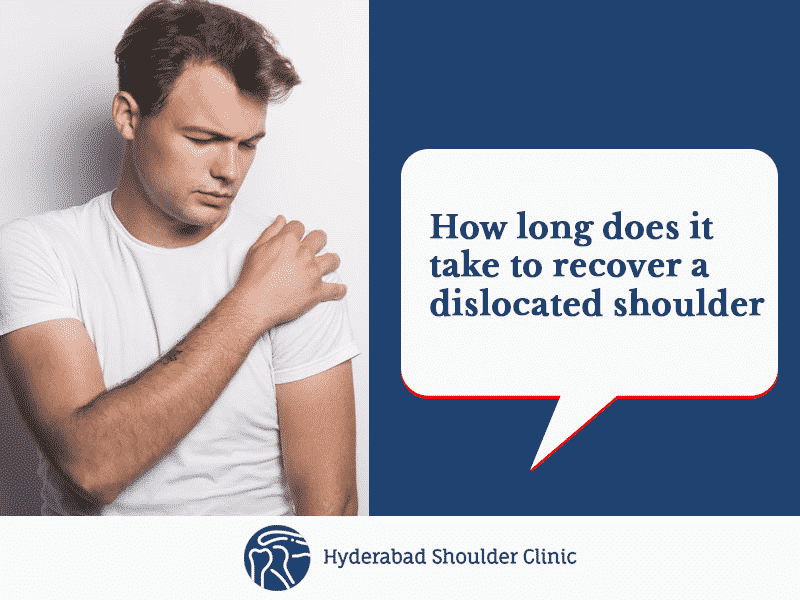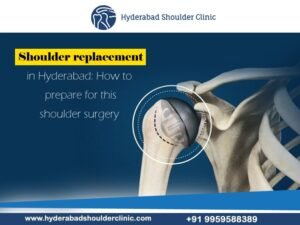Sports and activities increase the risk of shoulder dislocation, which include contact sports such as rugby, soccer, or hockey, and sports that are more prone to falls, such as skiing, volleyball, or climbing. However, you don’t have to play sports or be outside to strain your shoulder. Any fall or a decisive blow to the shoulder can cause a dislocated shoulder.
Shoulder dislocation is common because the ability of the shoulder joint to move in multiple directions also makes it vulnerable to dislocations. The bone on the top of your arm, called the humerus, has a ball-shaped structure called the humeral head at the top that articulates a socket-shaped scapula. If you fall on the shoulder joint (also known as the glenohumeral joint) or something hits you hard in this area, the humeral head can pop out of its socket because only soft tissue like muscles and tendons hold it in place.
Usually, with minimal shoulder damage, a person can return to sports within a few weeks. Usually, this is the time it takes for the swelling to subside and for you to have freedom of movement and strength again. It is not recommended returning to sports if mobility in the shoulder is impeded, or if the tendon is painful or strained while moving.
The damage caused by the injury determines the recovery period after a shoulder dislocation. In some cases, the level of pathology is minimal. Then returning to sports can take a few weeks. For more information on the damage that can result from a dislocated shoulder, please visit our blog here provided by Dr Chandrasekhar B.
What is a dislocated shoulder?

A displaced shoulder causes severe pain to the affected person. It also becomes nearly impossible for a person to move the affected arm in any direction. There may also be swelling, bruising, and discolouration of the skin in the affected area. In some cases, the affected person may also hear a popping sound during the dislocation. The shoulder dislocation also looks out of place compared to the uninjured shoulder opposite.
If the nerves are damaged during a shoulder dislocation, the affected person will also feel tingling and paresthesia in the arm, which means nerve damage from a shoulder dislocation. The shoulder is dislocated anteriorly in most cases, and rarely there is a posterior shoulder dislocation.
Reset your shoulders early:

If you have shoulder dislocation, you should see a doctor and get better as soon as possible. The longer you wait, the more the soft tissue in your shoulder will swell, making it more difficult to insert the humeral head back into its socket. Hence, shoulder dislocation requires immediate travel to the emergency clinic.
When you arrive at the clinic, your doctor will order an x-ray to determine which direction you dislocated your shoulder as this will affect the reset approach. Your doctor will also ask some questions about how you dislocated your shoulder and whether this has happened before. The actual process of getting the arm back into the socket, called closed reduction, only takes a few minutes. However, the recovery time after injury tends to be longer.
Factors to determine recovery:

The shoulder dislocation can be repaired medically with or without surgery, depending on the severity of the injury. Repairing the shoulder that doesn’t require surgery is called a closed reduction. Several closed-loop reduction techniques are used to a specific trauma; this non-surgical repair can also be used in related nerve injuries and fractures. However, it is essential to avoid repeated attempts at reduction, which in turn can damage the joint structure or risk necrosis (cell death and the collapse of the bone structure due to disruption of bone blood supply).
The number of factors will determine how well your shoulder will recover from the dislocation, including the following:
- Cause of injury
- Age of the injured patient.
- All associated fractures and injuries to muscles, ligaments, blood vessels, or nerves.
- Several tries before the arm is reset.
Men between the ages of 10 and 30 have the highest rates of shoulder dislocation and are more likely to experience recurrent instability after this shoulder injury than women. Once the shoulder slips, there is an increased risk of subsequent dislocation. This risk is highest in younger patients under 20 years of age.
If you injure your shoulder while being an action hero or sports player, it is best to seek shoulder surgeon help immediately. Your doctor will monitor your joint for possible nerve damage before and after your shoulder has healed, and will carry out a rehabilitation program tailored to your injury.
Recovery Time:

If your shoulder dislocation is severe, or if your shoulder dislocation is frequent, surgery may be needed to repair the damage. However, most dislocated shoulders heal very well with non-surgical treatment. In general, the time it takes to recover from a dislocated shoulder can vary from one to three months. Note, however, that this is only an estimate. Failure to follow your doctor’s instructions will affect your recovery and prolong healing. So make sure to listen to your doctor and do what he recommends.
How long will it take to recover from a shoulder dislocation?

As mentioned earlier, shoulder dislocation occurs when the shoulder pops out of its normal anatomical position due to a strong pull, fall, or pressure. This causes significant stretching of the ligaments in the shoulder. One incident with a shoulder dislocation can prevent a person from exercising or engaging in other strenuous activities for an extended period.
After shoulder dislocation is confirmed, the affected arm is immobilized. This immobilization is done to ensure that the shoulder has sufficient time to heal adequately. This immobilization time is approximately two to three weeks.
Once the inflammation has subsided, and the person’s pain has subsided with every effort to move the shoulder, the arm can be released from the sling for less movement and strengthening exercises, as the shoulder has a significant tendency to harden as a result of immobilization.
It is essential to consult with a physical therapist who can formulate a detailed therapeutic regimen for the shoulder to help get it back into shape. It usually takes about two weeks of intense physical therapy to get the shoulder moving again without much pain or difficulty.
It takes about 6-8 weeks for the shoulder to move after being dislocated. With aggressive physical therapy, individuals can regain all the strength lost due to shoulder dislocation.
Therefore, with a shoulder dislocation, if there is no significant damage to the ligament and nerve structures, it can take about 10 to 12 weeks for a person to return to normal activities. If the tendons and ligaments are so severely damaged that surgery is needed to correct the abnormality, it may take two to three months for the surgery to heal. Recovery takes six months.
Recovery tips:

To heal your dislocated shoulder, you will need to repair the shoulder The most severe pain stops once your shoulder is back in place, but you will likely experience mild pain. Ice and anti-inflammatory drugs are usually enough to deal with this pain. As your shoulder begins to heal, your doctor will likely prescribe exercises to strengthen your shoulder and prevent further dislocation. You can do this by seeing a physical therapist, or your doctor can provide a program that you can do at home.
Conclusion:
Full recovery of shoulder strength and activity may take up to a year. Patients who follow their rehabilitation plan can anticipate a full return to pre-injury activity. If you injure your shoulder in an action moment, it is best to seek care promptly. Physicians monitor your joint for possible nerve damage before and after your shoulder is reset. A rehabilitation program tailored to your injury.
From Olympic athletes to professional athletes to children in youth sports and those who want to be more active, Dr Chandra Sekhar. B who can offer competent care and the best recovery plan. Suppose you have recently been injured or are concerned about persistent pain, Dr Chandra Sekhar. B the best shoulder surgeon has the expertise to assess your condition and create a plan to help you get back to activity quickly and safely.
Begin your journey to a more robust and healthier sport. make an appointment online or call us for a consultation.





